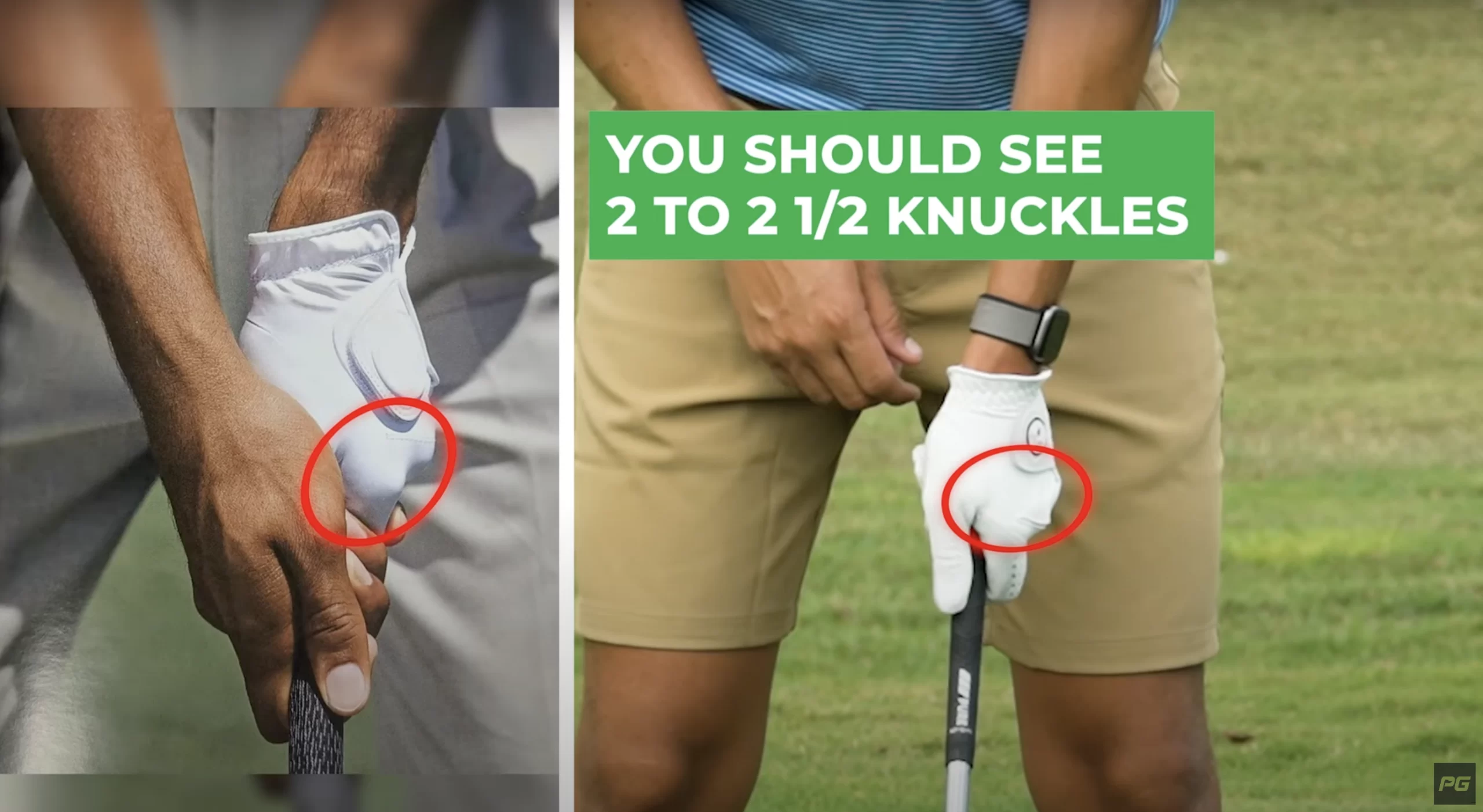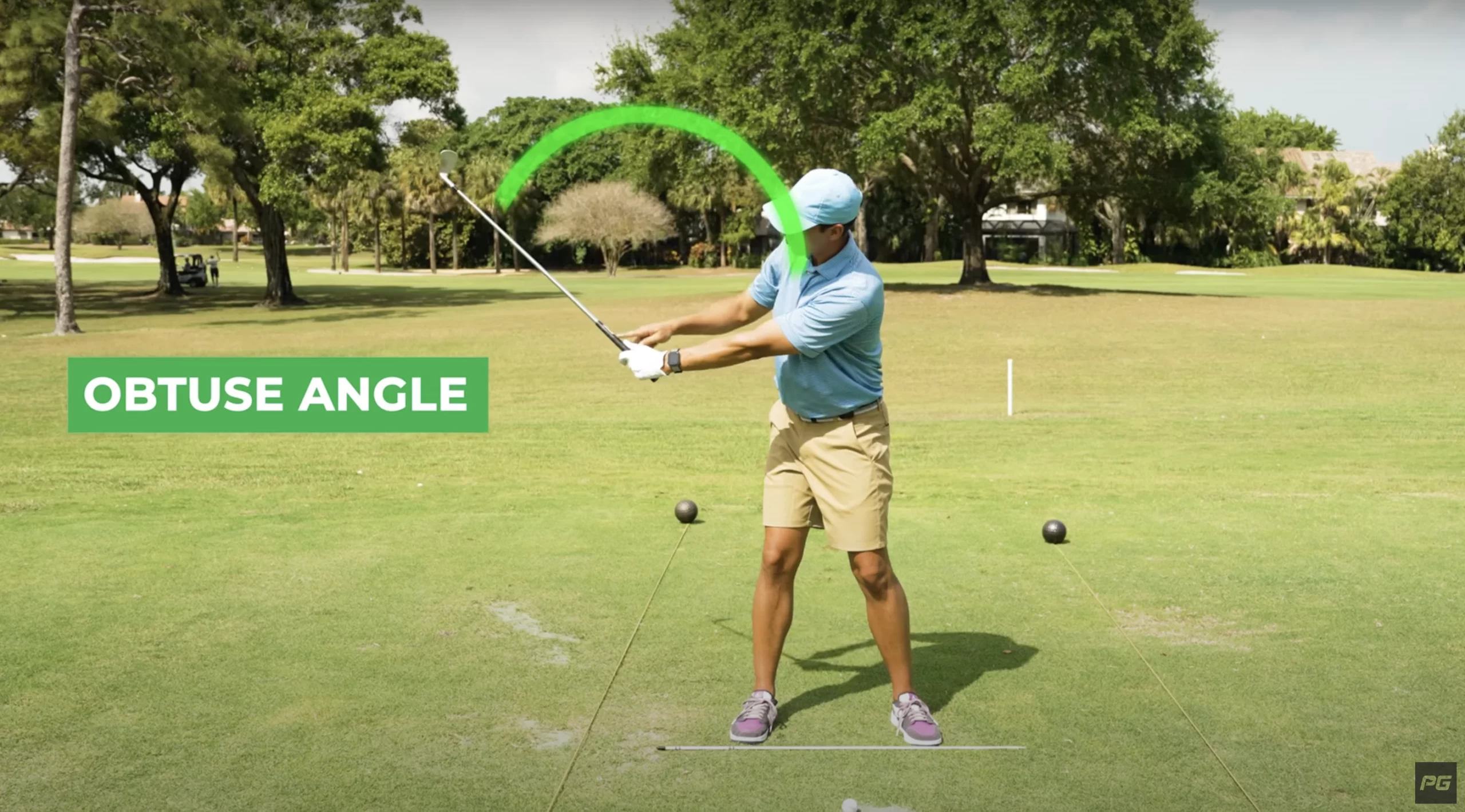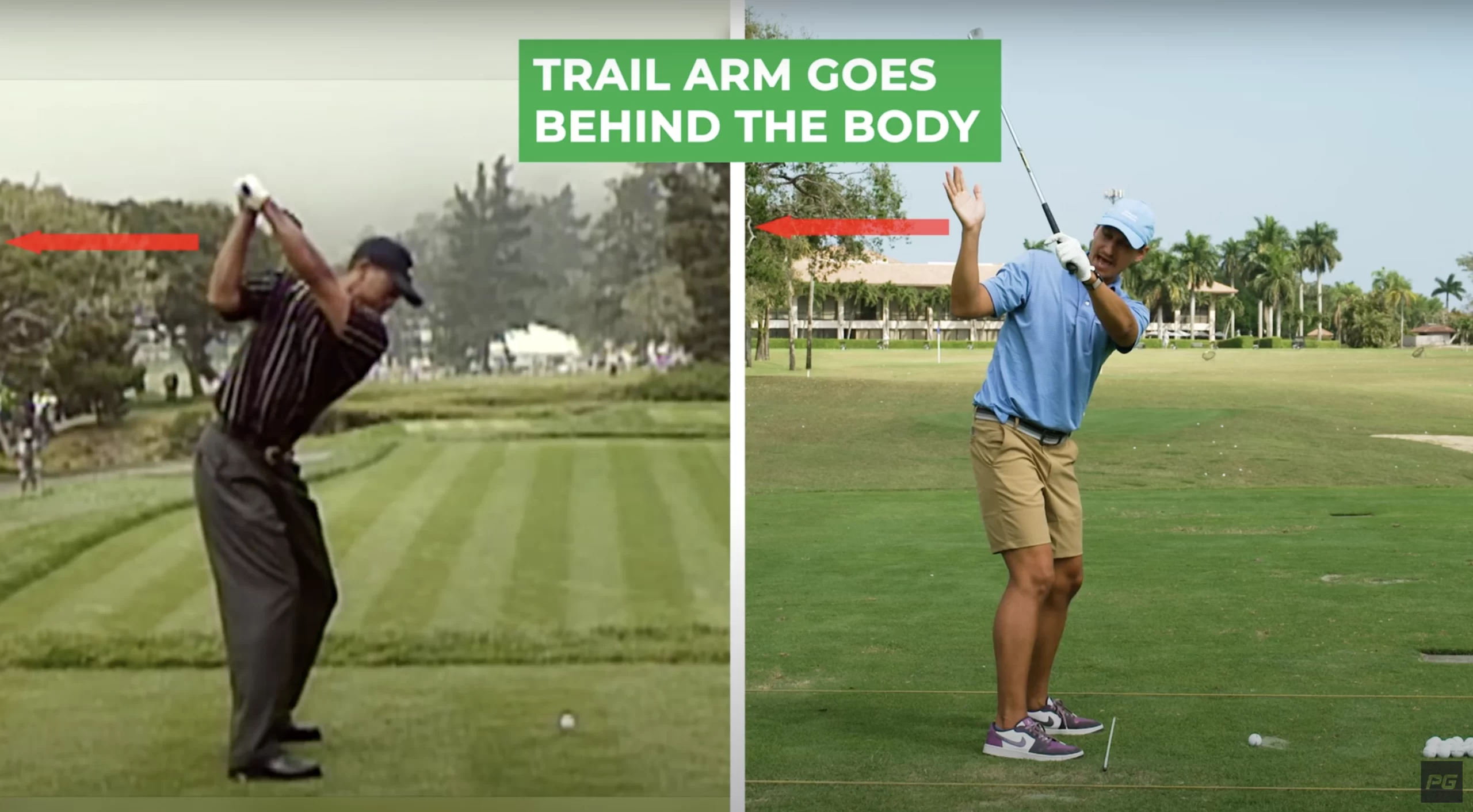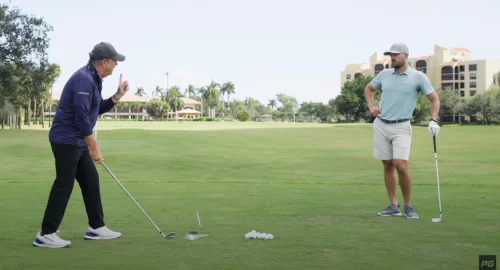
In the world of golf, the swing is the heartbeat of the game. Mastering the fundamentals of the golf swing is absolutely essential.
A powerful and precise golf swing is the difference between a frustrating day on the course and one that leads to a ton of joy. To score more consistently, you need to address golf swing basics like your grip, stance, posture, alignment, and takeaway.
In this article, we’ll delve deep into the art and science of the golf swing and break down the most important positions to strive toward.
Easy Golf Swing Tips
Check out the video below from Performance Golf’s own JT Thomas to learn how to swing like one of the best golfers ever – Tiger Woods.
Because let’s face it, if you’re going to learn, why not learn from one of the best ball strikers of all time? Let’s dive into what made Tiger nearly unbeatable in 2000 with three major championships and nine PGA Tour wins.
Club Grip
When learning golf swing tips the grip is the first place to start, as your hands are the only part of your body that touch the club. Your grip plays a major role in your takeaway, swing path, and ball flight. As we mentioned in our blog “5 Tips to Stop Slicing the Golf Ball,” changing your grip can change your entire game.
Tiger has used different grip styles over the years, but in 2000 specifically, it was slightly stronger than a neutral position. This meant that his left hand was predominantly over the golf club which helped hit a lot of draws.
If you’re someone who hits a lot of slices and wants more distance, strengthening your grip can make a big difference. Try to see two or two and a half knuckles on your lead hand when looking down at the club.

Once the left hand is in a slightly stronger than neutral position, set the right hand on the club so it’s more underneath the grip. The goal is to get the right V (between your thumb and index finger) pointing toward your right shoulder… assuming you’re a right-handed golfer.
Tiger Tip: Check Your Alignment
Another important golf swing fundamental is getting aligned properly with the target. If you’re set up open or closed, it can lead to some big misses without even realizing it.
Once you have a good hold of the club, use an alignment stick to get your feet aimed properly at the target. This is one of the most important basics of the swing and why you see even the best players in the world constantly working on alignment.
Posture and Stance
The second fundamental is Tiger’s posture, which has become essentially textbook perfection over the years. JT says, “What he did was make sure that his torso was very tall and his rib cage was rounded. We don’t want to have our butt too far behind our heels.” See a visual of this in a screengrab from the video below.

By keeping the torso as tall as you can it’s easier to get the lower body involved and create tons of power on the downswing. In Tiger’s book, How I Play Golf, he emphasized the importance of perfect knee flex too.
“I want just enough bend in my knees to feel balanced and ready for action. I have a sense of being light on my feet. My weight is distributed evenly from heel to toe and my hips and shoulders are ready to rotate freely.”
When your posture and stance are as fundamental as Tiger Woods in 2000, it makes the rest of the swing a lot easier. A lot of the golf swing happens before you swing the golf ball and a good setup position is key to success.
Tiger Tip: Dial in Your Stance
Posture, grip, and alignment are key – but don’t neglect the right stance. Your stance will change based on the club you’re hitting; the longer the club, the wider the stance.
With wedges and irons, you want your feet about shoulder-width apart. With fairway woods and drivers, you want your feet slightly wider than shoulder-width apart to generate more power. For chip shots and short game shots, you’ll want a much narrower stance.
The correct stance makes it easy to transfer weight properly, maintain knee flex, and stay balanced during the swing. Check all of these fundamentals during every practice session and it’ll help develop a much more consistent swing.
The Takeaway
The third step is the takeaway which sets up the rest of the backswing and transition.
One of the problems that most golfers make here is taking the club back too far on an inside path. This messes with the path and opens the face a lot of times which leads to a pull slice.
However, JT mentions that the key to starting the takeaway properly is more about sternum rotation, not hand movement. While it looks like Tiger is starting the takeaway with his hands, it’s actually his upper body starting the backswing.
A good way to feel the proper start to the backswing is to place your left hand on the club and trail your hand on your sternum. Feel your sternum and rib cage rotate around the body to get separation of your left arm away from your body (watch the video for how to do this.) This subtle drill will help start the backswing in a great position and make it easier to create lag on the downswing.
Once this position feels comfortable you need to understand how the right arm moves as well. The right arm should turn right and away from the body slightly – known as supination.
Another takeaway from the Tiger Swing is that the toe of the club shifts up slightly, setting yourself up for a great contact swing.

Mid-Backswing
The next checkpoint to swing like Tiger is the mid-backswing, which is when the lead arm is parallel to the ground. First, you want plenty of width in the backswing.
What you’re looking to have at this point in the backswing is your lead arm and club creating a wide, obtuse angle.

The second part of the backswing Tiger did perfectly was minimizing excessive wrist hinge. This strong position will set you up to hinge at the top of the swing but still maintain plenty of width to create speed on the backswing.
Top of the Backswing
The last part of the backswing is when the left arm is parallel to the ground, until it reaches the top. Add the wrist hinge, fold the right elbow and turn our right side around and out of the way.
You should feel your right shoulder as it keeps moving around your body. Many amateur golfers stop rotating at the top of the backswing, which limits their distance potential.
All of the motions thus far take a fraction of a second and set up the rest of the golf swing. Tiger referred to this as “the slot” – where the shaft is parallel to the target line just as it was midway through the backswing. From here the club should be pointed down the line; not laid off or across the line.
If the club is laid off (pointing left of the target) it promotes an over-the-top motion and leads to a slice or pull. If the club is across the line (pointing to the right of the target) it can lead to a block right or hook shot.
Check this position in the mirror at home so you can transition and transfer your weight properly on the downswing.
Tiger-Worthy Transition and Downswing
Tiger’s move at the golf ball in transition and the downswing is a thing of beauty, and made him one of the best ball strikers ever. In the early 2000s his “Tiger squat” was slightly unorthodox, but now a common move that the best golf teachers preach to their students.
Tiger’s transition is a three-part process:
- Right shoulder drops behind the body.
- His torso (rib cage) starts to rotate toward the target.
- His pelvis moves back into flexion to unload into his left side.
If you watched Tiger’s swing in the video you’ll notice that his right shoulder drops slightly behind his body in transition. This is a power move that helps strike the ball with an in-to-out swing path. When the right shoulder drops behind the body, the torso starts to rotate open toward the target.

This is one of the most important moves in a fundamental golf swing but happens in a split second. Slow down the video (timestamp 7:15) and really watch how Tiger not only drops the club back but also starts to rotate his lower body open on the downswing. This gives him a ton of power to unleash his speed at impact.
When these two moves happen simultaneously, it automatically helps get the pelvis back away from the ball. This leads to the “Tiger squat” where he’d squat down slightly before impact to use his lower body for insane power.
Rory McIlroy is another great golf player who’s implemented this in his swing. He uses the ground to push off like a springboard and create plenty of momentum.
Tiger Tip: Don’t Rush the Downswing
Tiger made golf look pretty easy in 2000 – especially with his phenomenal tempo. While it might look fast, he made sure to sequence everything properly.
Tiger has said that most everyday golfers rush the downswing which actually causes players to lose speed. Instead of rushing, he emphasized letting gravity rule.
“I like to start the downswing by shifting my weight easily back to my left side, and then letting my arms fall downward in front of my chest. I don’t want my shoulders unwinding so fast that they get way ahead of my arms.”
Impact Position and Follow-Through
Now it’s time for the moment of truth – impact position. To swing like Tiger you need to check two important positions when the golf club meets the ball.
First, is having enough side bend at impact where the trail shoulder is lower. It feels almost like a side crunch while the lead side expands. What this does is allow you to cover or compress the ball which is another fundamental of a great ball striker.
Second, while the right shoulder is lowering the pelvis continues to open so the hips can clear. From here it’s easy to roll the wrist over properly and lead to a balanced finish.

Plus, if you execute this process correctly don’t forget a nice club twirl à la Tiger as you watch the ball off the face.
Swinging on the Course
Swinging like Tiger is easier said than done, but just remember it’s all about the fundamentals. Tiger found so much success in 2000 and beyond because he was relentless with his fundamentals.
Here’s a quick recap to help you build an effortless golf swing:
- Slightly stronger grip – especially with the left hand.
- Solid posture with slight knee bend and rounded rib cage.
- Get your left arm away from your body when it’s parallel to the ground.
- Keep plenty of width in the swing and hinge the wrists just past the mid-backswing.
- Begin the downswing by dropping the right shoulder back to shallow and rotate the pelvis toward the target.
If you need more videos to develop a Tiger-like swing, make sure to check out our training library. Whether you need to fix your slice, add distance, or improve your tempo, we have a series just for you!

